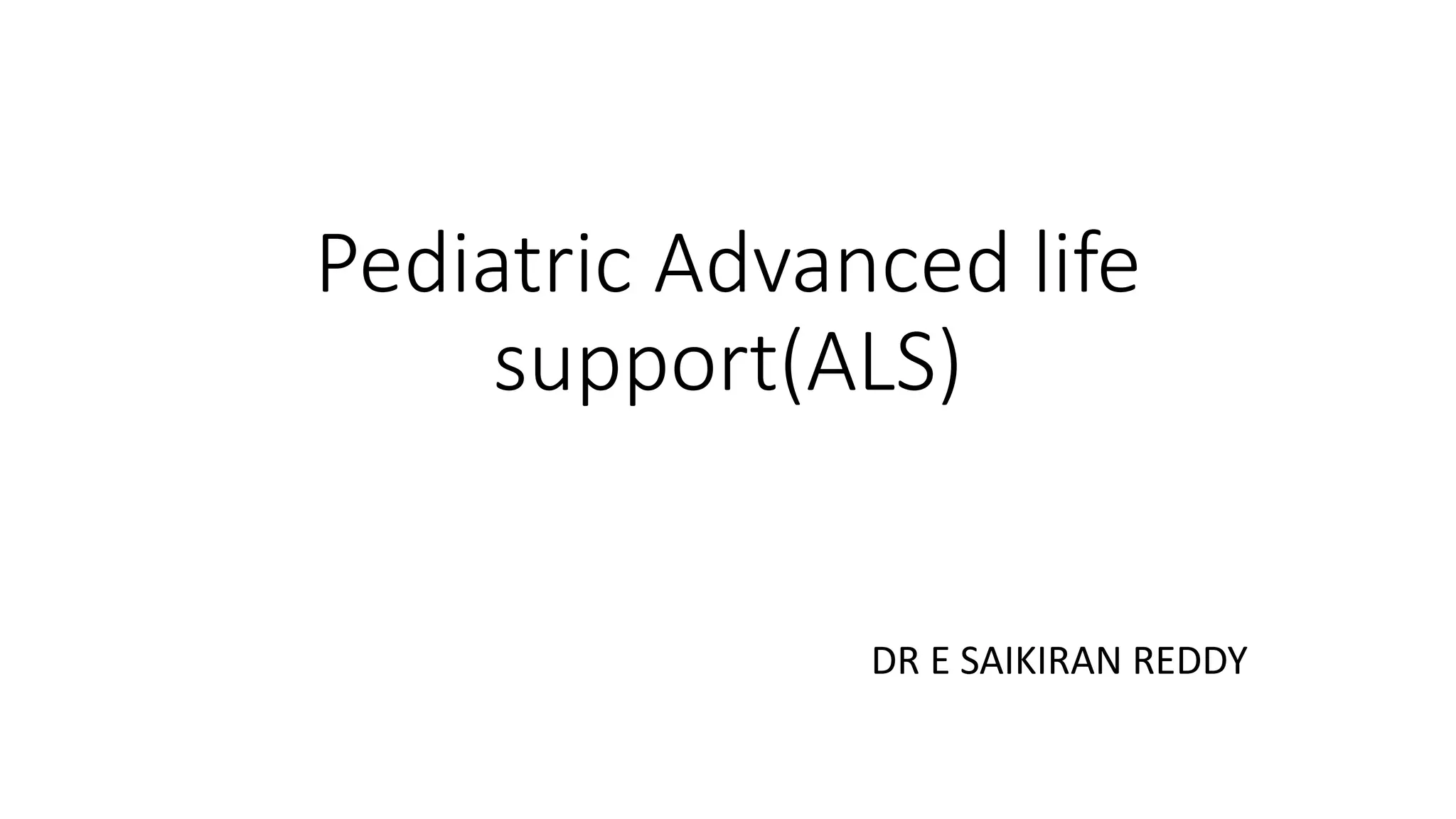Pediatric Advanced Life Support (PALS) involves maintaining pulmonary and circulatory function in children experiencing cardiopulmonary arrest. Cardiac arrest in children is usually due to respiratory failure or shock rather than primary cardiac causes. PALS requires high-quality CPR with adequate chest compressions and ventilations. For pulseless arrest, rescuers should begin CPR, attach monitors, and treat based on rhythm - defibrillating for shockable rhythms and continuing CPR plus epinephrine for non-shockable rhythms like asystole and PEA. Vascular access via IO or IV allows for drug administration while minimizing interruptions to compressions.


![• Pediatric Advanced Life Support usually takes place in an environment
where many rescuers are rapidly mobilized and actions are performed
simultaneously. The challenge is to organize the rescuers into an
efficient team. Important considerations for the greatest chance of a
successful resuscitation from cardiac arrest include the following
• Chest compressions should be immediately started by one rescuer,
while a second rescuer prepares to start ventilations with a bag and
mask
• The effectiveness of PALS is dependent on high-quality CPR, which
requires an adequate compression rate (at least 100
compressions/min), an adequate compression depth (at least one
third of the AP diameter of the chest or approximately 1 ½ inches [4
cm] in infants and approximately 2 inches [5 cm] in children).](https://image.slidesharecdn.com/pediatricadvancedlifesupport-210727174414/75/Pediatric-advanced-life-support-PALS-3-2048.jpg)




































![Neurologic System
• A primary goal of resuscitation is to preserve brain function. Limit the
risk of secondary neuronal injury by adhering to the following
precautions:
-Hyperventilation may impair neurologic outcome by adversely
affecting cardiac output and cerebral perfusion.Intentional brief
hyperventilation may be used as temporizing rescue therapy in
response to signs of impending cerebral herniation (eg, sudden rise in
measured intracranial pressure, dilated pupil[s] not responsive to light,
bradycardia, hypertension).
• Therapeutic hypothermia (32°C to 34°C) may be considered for
children who remain comatose after resuscitation from cardiac arrest
It is reasonable for adolescents resuscitated from sudden, witnessed,
out-of-hospital VF cardiac arrest](https://image.slidesharecdn.com/pediatricadvancedlifesupport-210727174414/75/Pediatric-advanced-life-support-PALS-40-2048.jpg)


